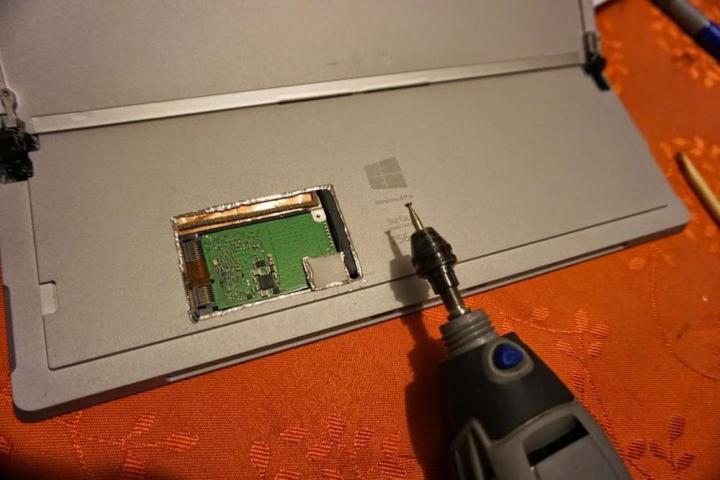
Back in February, the world caught wind of a new method to upgrade the solid-state hard drive included in the Microsoft Surface 3 Pro that allowed users to push beyond the company’s self-imposed limit of 512GB. The technique, pioneered by Mexico City’s Jorge Malagon, doesn’t involve going through official channels on Microsoft’s side. Instead he used a drill to crack open the tablet/laptop hybrid by cutting straight through its metal body.
The reason for the forced entry, as opposed to a more elegant solution, is because the Surface 3’s screen is notorious for cracking at even the slightest attempt to unscrew the backplate. When both iFixit and CNet attempted traditional teardowns upon the Surface 3’s initial release, they found that the adhesive between the screen and the shell was so strong that it was nearly impossible to get the two separated without destroying either the shell or display in the process.
Malagon found a way around this problem by simply checking the schematics of his Surface 3, and then carefully drilling out the space where the SSD was kept inside through the back. From there it was just a matter of installing a replacement, which in this case took the form of Samsung’s 840 EVO 1TB mSATA solid state drive.
The tech-saavy Malagon even went to the trouble of cloning his old hard drive, rather than trying to re-install Windows from scratch. That was probably a wise move, because it means he didn’t have to hassle with trying to re-install the Surface Pro 3’s drivers.
We can’t recommend going this route unless you’re absolutely confident in your abilities with a Dremel, but it’s nice to know it’s an option — if you have a drill, a compatible SSD, and you’re a bit batty.
Editors' Recommendations
- Surface Laptop Go 3 vs. Surface Pro 7+: is it an upgrade?
- Dell XPS 13 2-in-1 vs. Surface Pro 8: New competition
- Windows 10 can run better virtualized on Apple’s M1 Macs than on Surface Pro X
- Microsoft invented the 2-in-1, but Apple’s new iPad Pro will perfect it
- The Microsoft Surface Pro X has 3 times the performance than the Pro 6



